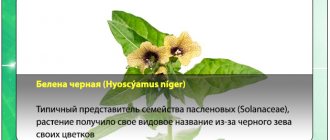Cadmium is a silvery-white metal. It is used in the production of low-melting metal products and batteries. Metal salts are added to paint and used for cadmium plating of metal products.
loading…
Poisoning with cadmium, like any other chemical element, leads to serious consequences, they cause a total disruption of the central nervous system, and requires immediate medical attention.
How and why does intoxication of the human body occur, what are the ways to avoid poisoning, what first-aid measures should be provided to the victim in a timely manner in order to avoid harmful consequences?
Causes of cadmium poisoning
Most cadmium compounds are a byproduct of the production of metals such as zinc, lead and copper. It is also found in various consumer products:
- Batteries;
- Pigments;
- Metal coatings;
- Plastics;
- Some metal alloys;
- Fertilizers;
- Cigarettes.
When cadmium enters the air, it binds to small airborne particles. When it falls on the ground or into water in the form of rain or snow, it can infect fish, plants and animals. Improper waste disposal can result in cadmium leaking into water and soil.
Skin contact with cadmium does not cause health problems, but it can lead to serious problems:
- Inhalation of air that contains high concentrations of cadmium;
- Consumption of food containing relatively high levels of cadmium - shellfish, liver, kidneys. Also, high levels of cadmium are often found in potatoes and vegetables;
- Consumption of water contaminated with cadmium;
- Inhalation of tobacco smoke. Smoking doubles the average daily dose of cadmium.
Therapy and first aid
If cadmium poisoning is detected, it is necessary to call doctors and provide first aid to the victim.
First aid:
- In case of acute poisoning by oral route, the victim’s stomach is washed with plenty of clean water.
- If necessary, use laxatives.
- Then the poisoned person is given various sorbents to reduce the amount of toxin in the body.
- Before doctors arrive, you can also give the victim milk. It will help calm an irritated stomach.
Treatment is carried out in a hospital.
Treatment:
- additionally wash the stomach using a probe,
- The antidote used is unithiol. It is administered three times a day for a week.
- medications are prescribed to restore the functioning of the affected organs.
- If necessary, special inhalations are carried out to restore the respiratory function of the body.
- Various vitamin therapy is used to strengthen the immune system.
- a special diet is being developed.
In addition, if cadmium poisoning is detected, it is necessary to limit contact with this substance.
Symptoms of cadmium poisoning
Consuming food or drinking water contaminated with cadmium may cause:
- Vomiting/nausea;
- Stomach colic;
- Diarrhea;
- Kidney damage;
- Bone fragility;
- Death.
Inhalation of cadmium can cause:
- Lung damage (chest pain or shortness of breath);
- Kidney disease;
- Bone fragility;
- Death.
There is no conclusive evidence that cadmium can cause lung cancer, but as a precaution, the US Environmental Protection Agency classifies cadmium as a probable human carcinogen.
How to avoid intoxication - prevention
People who live near industrial enterprises and large highways need to undergo regular medical examinations and urine tests, as they are at risk of chronic intoxication with a toxic substance. Employees of enterprises that have constant contact with cadmium must undergo a preventive medical examination at least 2 times a year.
Compliance with safety rules when working with toxic substances and respiratory protection with respiratory masks is mandatory. Upon completion of work, you should always rinse your mouth with plain boiled water.
It is prohibited to drink water from natural sources that flow near roads, factories, fields, without boiling or purification with special filters. If you notice such signs as frequent headaches, weakness, drowsiness, pain in the lower back, sternum, you must seek medical help as quickly as possible.
During work, during your lunch break, you need to drink a glass of milk every day, which relieves irritation from the gastric mucosa and prevents the absorption of toxic substances into the circulatory system.
Prevention of cadmium poisoning
To reduce the chance of cadmium poisoning:
- Do not smoke. Smoking is the largest source of cadmium exposure for most people;
- Identifying potential sources of cadmium in and around your home and work will help prevent poisoning;
- Eat a balanced diet that provides adequate amounts of calcium, iron, protein and zinc;
- Properly store (out of the reach of children) cadmium-containing items (e.g. fungicides, batteries, fabric paints, ceramic/glass glazes, fertilizers);
- Keep nickel-cadmium batteries out of the reach of children;
- Read instructions for safe use of cadmium-containing fungicides and fertilizers in your garden or garden;
- If you have a well, test the water for cadmium;
- If cadmium is present in well water, it is recommended to use bottled water for drinking and cooking or install a water filter that removes cadmium and other metals from drinking water;
- Do not allow small children to play around hazardous waste sites.
Video: what is cadmium and where do you get it from?
Read further:
Rehabilitation after a heart attack, prevention of new attacks and care
Analysis and diagnosis of salmonellosis - methods for children and adults
How to quickly induce vomiting after eating at home for weight loss
How to understand that a person is addicted to alcohol
Poisoning with heavy metal salts - symptoms and treatment
Article rating:
Share with friends:
You may also be interested in:
Ammonia poisoning
Methane poisoning
Bromine vapor overdose: first aid and treatment
Corpse poison - consequences and signs of poisoning
Physical and chemical properties
Cadmium is a soft metal with a hexagonal lattice. It has a silvery-white color and a melting temperature of 321°C. The boiling point of cadmium is 770°C. The bending of a cadmium rod is accompanied by a very characteristic weak cracking sound caused by the friction of metal microcrystals among themselves. It is this effect that destroys any type of impurities found in the metal.
Compared to tin, cadmium is harder, but noticeably softer than zinc, so this metal can be cut quite easily with a regular knife. When a substance is heated to a temperature of 81°C or higher, the metal loses its natural elasticity and can be easily crushed into a powder. Oxides and sulfides of the element are poorly soluble in water.
Features of cadmium and its health hazards
A rare metal, it is located in the periodic table of Mendeleev in the same group with zinc and mercury, some of their properties coincide. Discovered by Strohmeier in 1817. It is a soft, white metal with a silvery tint and is easy to process. In a humid environment, it becomes covered with an oxide film, preventing further oxidation.
It has found application in jewelry, painting (sulfates are used), and as an anti-corrosion coating. Used to produce electrodes used in batteries, semiconductors, control rods in the nuclear industry and various alloys, the addition of metal increases the strength of copper.
Why do such poisonings occur?
As a rule, intoxication with this substance occurs due to its accumulation in the tissues of the human body. This occurs when regularly eating foods containing a high percentage of cadmium.
The insidiousness of this substance is that it may or may not be present in any of the products. And we’re not just talking about food, cosmetics, shampoos, creams and much more can contain cadmium.
The metal is stably present in the following food products:
| Product name | Average cadmium content in micrograms per kilogram or liter |
| Drinking water | 1-1,2 |
| Fish | 0,2-0,4 |
| Cocoa (powder) | 0,5-0,65 |
| Kidneys and other offal | 1-2,2 |
| Rice (cereal) | 0,06-0,12 |
| Meat | 0,016-0,025 |
| Shrimp, mussels and other seafood | 1,2-1,8 |
| Margarine | 0,042- 0,052 |
| Bread and bakery products | 0,03-0,05 |
An average strength cigarette contains from 0.002 mg to 0.004 mg per kilogram of tobacco mixture. This means that smokers are much more likely to be poisoned by cadmium than those who do not have this bad habit.
How are these poisonings classified?
If there is no other reason for intoxication other than the accumulation of cadmium in the body or its one-time intake in a significant amount, then poisoning is divided according to the type of development. That is, diseases are divided into:
- Spicy.
- Chronic.
Acute poisoning, in turn, is divided into types corresponding to the severity of the patient’s condition:
- lungs;
- average;
- heavy.
Such a condition as poisoning with specific toxic substances, especially metals and their various compounds, is invariably difficult for the human body to tolerate, regardless of the severity of the disease.
What it is?
Cadmium is a silver-colored metal with excellent malleable properties, high ductility and resistance to environmental influences. Of course, this is a deadly poison for the human body.
In nature, this metal occurs in the form of oxides, sulfides and other compounds. It is present in soil and sea water. This metal does not have independent deposits, but cadmium deposits can be found almost everywhere; it is a so-called trace element. This means that the presence of metal in food is more than likely.
Medical news
20.02.2019
Chief children's phthisiatricians visited school No. 72 in St. Petersburg to study the reasons why 11 schoolchildren felt weak and dizzy after they were tested for tuberculosis on Monday, February 18
Viruses not only float in the air, but can also land on handrails, seats and other surfaces, while remaining active. Therefore, when traveling or in public places, it is advisable not only to exclude communication with other people, but also to avoid...
Getting good vision back and saying goodbye to glasses and contact lenses forever is the dream of many people. Now it can be made a reality quickly and safely. The completely non-contact Femto-LASIK technique opens up new possibilities for laser vision correction.
Cosmetics designed to care for our skin and hair may actually not be as safe as we think
Cadmium
(Cadmium) Cd is a chemical element of group II of the periodic table.
Further treatment
For intensive removal of toxin from the body, forced diuresis and abundant drinking regimen are indicated. The method of administering diuretics is parenteral.
If measures are ineffective, doctors prescribe hemodialysis.
When cadmium vapor enters the lungs, measures are taken to restore breathing and prevent swelling of the mucous membrane. Diuretics and steroid drugs are prescribed. Medicines are used as for pneumonia. To normalize energy and inflammatory processes in the bronchial mucosa and gastrointestinal tract, multivitamin complexes are prescribed.
Diet therapy is used, which involves eating food rich in calcium and phosphorus; such poisoning is accompanied by an imbalance of these ions.
There are drugs that can bind metal, reduce toxicity and remove it from the body. The drugs include Tetacin calcium. The course of treatment is a week. The drug is supposed to be taken three times a day (possibly more - depending on the severity of the poisoning).
Medicines that have a hepatoprotective effect are prescribed - Essentiale, Lipoic acid, Rutin, Choline chloride, etc.
Lead intoxication involves the use of agents that form non-toxic complexes with lead. These include: Dimercaprol, Cuprimin and EDTA. To enhance their removal, diuretics are prescribed.
Further treatment is symptomatic. For constipation, a cleansing enema is performed. Intestinal colic is relieved with antispasmodics.
It is forbidden to use laxatives in case of “lead” colic.
How to remove cadmium from the body
The human body has a good cleansing ability. To independently remove hazardous substances, you must:
- Make an inhalation with the addition of soda.
- Put up mustard plasters.
- Drink milk and soda.
- Carry out rice cleansing procedures.
- Drink tea with coriander and pectin-containing foods daily: pumpkin, carrots, radishes, tomatoes, eggplants.
Clinic
Acute poisoning
In case of acute poisoning by dust or smoke of cadmium oxide, signs of intoxication usually appear after 10-36 hours (sometimes after 30 minutes - 2 hours). Cadmium oxide is odorless and does not cause immediate irritation, so inhaling even large concentrations of cadmium oxide does not always feel like work. During the latent period, pain in the forehead, dizziness, nausea, pallor, pain in the epigastric region, and a sweet taste in the mouth may appear. Then a picture of acute tracheobronchitis and diffuse bronchiolitis develops with attacks of painful convulsive cough with sputum, severe shortness of breath and cyanosis. This is often followed by toxic bronchopneumonia (often hemorrhagic) and pulmonary edema. With a favorable outcome, there is a slow recovery. In severe forms of poisoning, death from pulmonary edema or bronchopneumonia is possible, most often on the 3-5th day.
Non-occupational (oral) poisoning is possible as a result of preparing or storing food or drinks in cadmium-coated containers. Poisoning in this case occurs as a severe food infection - with nausea, vomiting, abdominal pain, diarrhea, collapse (death is possible within the first hour).
Chronic poisoning
Early symptoms are: rhinitis (“cadmium runny nose”), decreased sense of smell, up to anosmia, yellow-gold ring-shaped staining of the gums in the neck of the tooth (“cadmium border”), headaches, attacks of dizziness, decreased appetite, sleep disturbances, irritability, tearfulness, pain in the heart, pain in the joints, dry throat, sweet taste in the mouth, thirst, attacks of pain in the stomach, nausea, weight loss.
With further development of intoxication, nosebleeds, erosions and crusts appear on the nasal mucosa, ulceration and perforation of the nasal septum, chronic, predominantly atrophic, chronic bronchitis, emphysema, diffuse progressive pneumosclerosis with signs of increasing oxygen deficiency, neurasthenic syndrome with vegetative disorders, gastrointestinal disorders, liver damage, general asthenia and cachexia. Nephropathy develops slowly, predominantly affecting the proximal tubules.
There are frequent complaints of sharp pain in the pelvis, in the lumbar spine and in the epiphyses of the bones of the extremities. Radiographs show signs of decalcification (transverse grooves on the shoulder blades, femurs, tibias, and pelvic bones). Disorders of protein metabolism are manifested by a decrease in albumin levels. Characteristic is the excretion of protein in the urine (up to 4 g per 1 liter of urine) with a low relative molecular weight (20,000-30,000), containing more globulins than albumins, as well as an increase in the amount of amino acids and uric acid.
In the peripheral blood there is often moderate hypochromic anemia or an increase in the number of red blood cells and hemoglobin (a compensatory reaction to developing oxygen deficiency). A sharp increase in ESR (up to 70 mm/h). A predisposition to tuberculosis has been noted.
With a severe form of chronic intoxication, the prognosis is unfavorable. Lung disease often progresses despite stopping work with cadmium.











